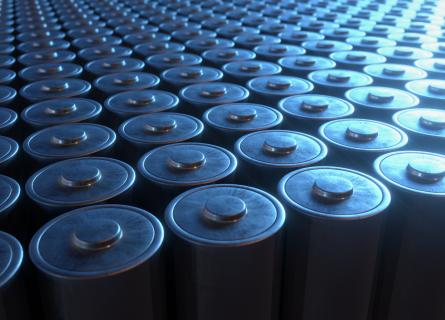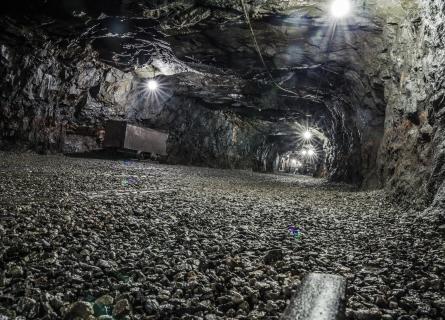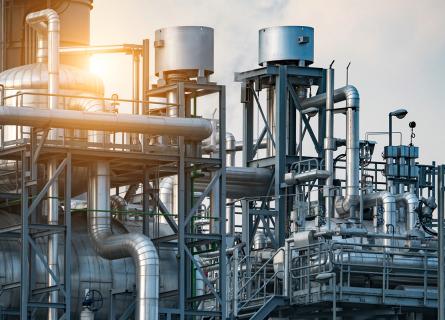
Clean Room atmosphere requirements for battery production
The core processes in lithium-ion battery manufacturing such as electrode manufacturing and battery cell assembly are performed in the Clean and Dry (C&D) rooms. In this article, we will deeply consider the peculiarity and challenges of clean and dry rooms in battery manufacturing specifically from the HVAC perspective.
The battery market has witnessed significant growth in recent years driven by growing demand for electric vehicles (EV) and green electricity storage solutions. Europe’s current production capacity for lithium-ion batteries is 128 GWh. According to experts estimates this figure will reach between 1000 and 2000 GWh by 2030. To meet this demand, new battery manufacturing facilities, commonly referred to as giga-factories, are planned and constructed globally.
“Giga-factory” is a term that we can first trace back to being used by Elon Musk's Tesla in 2013. Nowadays, it has been a widely adopted term among companies involved in battery manufacturing plants, electric vehicles, and other clean tech products.
The Lithium-Ion Battery Manufacturing Process: A Comprehensive Overview
The manufacturing process of lithium-ion batteries entails several steps, including the manufacture of the anode, cathode, electrolyte, and separator followed by the assembly of these components into a complete cell. The cells are put through formation and testing after assembly to make sure they meet specific performance standards.
For a deeper understanding of the lithium-ion battery manufacturing process, it can be presented in 13 steps:
- Slurry Mixing. The first step in lithium-ion battery manufacturing is to prepare the electrode slurry. The respective active material for the anode and the cathode is mixed with a binder and a conductive additive to form a slurry with the solvent.
- Coating. The prepared slurry is coated onto the corresponding metal foil for the anode and the cathode.
- Drying. Drying removes excess moisture from the metal foils using drying equipment.
- Solvent Recovery. Solvent recovery is the process of extracting the harmful and toxic solvent used for preparing the cathode slurry.
- Calendering. The calendering process involves compacting the electrode foils by passing them through a pair of cylindrical rollers.
- Slitting. Slitting is the process of cutting the electrode foil into the required dimensions.
- Vacuum Drying. Vacuum drying is the process of removing residual moisture from the electrodes using a vacuum oven.
- Cell Assembly. Cell assembly is the process of assembling the battery cell and placing it in an enclosure.
- Filling. Filling a lithium-ion battery with electrolyte liquid.
- Formation. The formation is an electrochemistry activation step that results in the forming of a Solid Electrolyte Interphase (SEI) on the anode of the battery during the initial charging and discharging cycles.
- Aging. Aging is the final step where the cells are stored on the aging shelves to stabilise the SEI. Degassing is carried out at this step for safety reasons. The cells are tested to ensure they meet specific performance criteria, such as capacity, voltage, and cycle life.
- Grading. Grading is the sorting the batteries with similar characteristics, improving the consistency of the finished battery cells, and ensuring the high performance of the battery pack.
- Packing. The production stage wherein cells are connected in series and in parallel, into battery packs, to achieve the desired voltage and energy capacity.

The core processes in lithium-ion battery manufacturing such as electrode manufacturing (steps 2 and 7) and battery cell assembly (step 8) are performed in the Clean rooms and Dry rooms, commonly called C&D rooms. In this article, we will deeply consider the peculiarity and challenges of clean and dry rooms in battery manufacturing.
Essential Clean Room Standards in Lithium-Ion Battery Manufacturing
What is clean room in battery manufacturing? A clean room is an engineered space designed to maintain a very low concentration of airborne particulates. It is characterised by its isolation, contamination control, and continuous cleaning to achieve the desired level of cleanliness.
The ambient outdoor air in a typical urban area contains 35,000,000 particles for each cubic meter in the size range of 0.5 μm and bigger. Cleanrooms are classified according to the number and size of particles permitted per volume of air. Clean room classification according to FS209E standard, like "class 100" or "class 1,000" denotes the number of particles of size 0.5 μm or larger permitted per cubic foot of air.
The clean rooms for battery manufacturing usually use the following classes of cleanness ISO 8, ISO7, and ISO6 per ISO 14644-1 standard or equivalent classes 100,000; 10,000; and 1,000 per FS209E standard. These classes belong to the middle class of cleanliness.
Essential Dry Room Standards in Lithium-Ion Battery Manufacturing
But besides the cleanness, the process room in battery manufacturing shall be dry. A dry room is a premises with a controlled low moisture level in the air. In the air of common office or living rooms, there are 4,9...9,9 grams of water per 1 kg of air (or 30...60% of relative humidity), but the dry room in battery manufacturing must have less than 0,3 grams of water per 1 kg of air (or less than 2% of relative humidity).
Lithium and electrolytes are highly sensitive and reactive to moisture, so it is essential to operate in extremely low humidity-controlled cleanrooms. It can even be said that it is crucial if you want to be sure of the quality and reliability of the batteries being manufactured.
HVAC Considerations in Giga-Factory Clean and Dry Rooms
The humidity level in battery manufacturing varies depending on the stage of the process. Typically, during cell assembly, currently, the dew point ranges from -35°C to -45°C, corresponding to an absolute humidity of 0.10555 to 0.2841 grams of water per kg of dry air. However, with the next generations of Li-ion batteries, the industry is witnessing a trend towards even lower dew points, sometimes reaching -60.0°C and, even below -80.0°C in critical areas like electrolyte fill.
The requirement for increased air dryness driven by the push for lower humidity levels in clean rooms has led to increased energy consumption, which constitutes a significant portion of lithium-ion battery production costs.
Since the required dew point is below zero degrees, the required dryness level in Clean and Dry rooms cannot be achieved during the drying process in the refrigeration cycle, but only using a desiccant, i.e. adsorption drying technology. The typical C&D room’s HVAC system consists of a make-up air handling unit (AHU) supplying fresh air and a dehumidifier unit (DHU) to perform a continuous drying process.

The typical dehumidifier unit (DHU) contains a desiccant wheel, heaters, filters, and fans. A desiccant wheel is a common type of sorption dehumidifier using a solid desiccant. It is also known as a rotary dehumidifier. The desiccant material is coated on the rotor surface. The basic principle of rotary desiccant dehumidification technology is that air is passed through a honeycomb desiccant rotor (wheel) that features a large active dehumidification surface. The rotor is usually made of corrugated aluminium tape rolled into a coil with high-concentration silica gel applied to the surface, which provides high adsorption capacity (the ability to adsorb water molecules). In this case, the humid process air passes through the rotor, and the exiting process air has a much lower moisture content due to the moisture extracted by the silica gel adsorption process.
For this drying process to continue the extracted moisture is required to be rejected from the rotor in a separate counter-flow airstream. The reactivation air is heated up to a maximum of 150°C, lowering the relative humidity to very low levels. Then the hot air passes through the regeneration zone of the rotor. The high temperature low relative humidity air is sufficient to break the molecular bond between the water vapour and the silica gel. As the moisture is introduced into the air it results in a warm and humid airflow that then is exhausted to the outside of the desiccant dehumidifier.
In such a way, the desiccant rotor (wheel) continually restores its capacity to adsorb water molecules from the process airflow. The reactivation airflow also performs the additional function of cleaning the rotor from contaminants that could be present on the surface of the rotor. Continuous rotation of the rotor provides a nonstop process of adsorption/reactivation.
The DHU can have from one to three sorption wheels and regenerating air flow with temperatures from 80 to 150°C depending on construction and efficiency.
The practical aspects of Clean and Dry room design for battery manufacturing
The C&D room is typically constructed with light walls inside the process building. This light wall construction must provide the required level of air and humidity tightness. It’s crucial to ensure that not only the walls and ceiling are tight but also that the room’s floor provides adequate moisture insulation to prevent moisture ingress through concrete.
When starting C&D room design it is important to assess the flow of people and materials within the cleanroom envelope. Proper sizing and the number of airlocks should be planned in advance to serve as intermediate areas that prevent the transfer of contaminated air. These airlocks are categorised into Personal AirLocks (PAL) and Material AirLocks (MAL).

The designed space above the clean room is a small room called a plenum, which is intended for pressure balance and air distribution in the clean space below. The floor of the plenum shall be walkable, it is also called the walkable ceiling of the clean room. This is important for proper maintenance of ventilation, lightning, firefighting, and other systems intended for the C&D room without contamination and main process interruption.
The C&D rooms shall be over-pressurised compared with surrounding spaces to prevent the entry of wet and contaminated air. The fresh supply airflow is mainly determined by the air compensation for local process exhaust, the necessary air over pressurisation level, and the fresh air necessary for personnel. The more airtight the C&D room is, the fewer resources are needed to maintain the desired internal atmosphere.
Key Design Considerations for Air Plenums:
- Walkability for maintenance access
- Distribution of process utilities
- Consideration of plenum height
- Maintenance of pressure within the plenum
- Airtightness and sealing of penetrations
- Overall dimensions for optimal functionality
Optimising Air Quality and Humidity Control in Clean Rooms
In the design and operation of clean rooms, achieving and maintaining the desired air quality and humidity levels are critical. Let’s delve into some key considerations:
- Cleanness of the air in the C&D room: There are certain technological approaches to keep the cleanness of the air in the C&D room. The required air exchange to keep, for instance, ISO7 (10,000 class) is from 30 to 60 air changes per hour (ACH). It is enough to provide the necessary level of cleanliness in the air.
- Keeping a necessary level of humidity: Maintaining the necessary level of humidity in the air sometimes requires a more intensive air exchange to remove moisture from the people in the room. Cause, the personnel working in the C&D - is the largest moisture contamination source. For example, it will be enough to have 30 to 60 ACH to keep the room's humidity level at dew point -40…-50°C, but to keep the humidity level at -60°C dew point in the same room with the same number of workers will require already 180 ACH.
Thus, with a decrease in the dew point and the same level of moisture contamination, the air exchange grows drastically, and providing up to -80°C dew point in the room with personnel presence can be very challenging. A trend to decrease dew point temperature in the room shall be performed simultaneously with replacement personnel in the room with automated lines and robots.
Space Allocation for HVAC Systems in Clean Room Design
Considering the need for space for the HVAC equipment, it is required in the design stage also to keep in mind the recommendations for space allocation. During the design phase, it’s important to allocate sufficient space for HVAC equipment:
- For ISO8 (100,000 class) or 10 to 20 ACH, up to 40% of the clean room floor area may be needed.
- For ISO7 (10,000 class) or 30 to 60 ACH, up to 75% may be required.
- For ISO6 (1,000 class) or 70 to 160 ACH, the HVAC space could equal 100% of the clean room area.
These recommendations are given without considering drying equipment, which may require additional space. When we are talking about -60…-80°C dew point the HVAC room can be bigger than the clean room that it is serving.
Balancing Energy Efficiency and Sustainability in Lithium-Ion Battery Manufacturing by Innovative HVAC Solutions
An analysis of the existing lithium-ion battery manufacturing giga-factories shows that the energy consumption of clean and dry room HVAC systems can be 29…38% of the total factory energy consumption, depending on the required humidity level and existing loads. Such high energy consumption for maintaining an indoor atmosphere in battery manufacturing can lead to substantial greenhouse gas emissions potentially diminishing the environmental benefits of lithium-ion batteries.
Thus, it is important to incorporate compensatory measures already in the design phase to create a more balanced and energy-efficient HVAC system. This cannot be achieved solely through the ventilation system but must be considered holistically, taking into account all energy sources and consumption media of the giga-factories. The balance should be fine-tuned at least between ventilation, dehumidification, heating, cooling, and electrical supply systems.
The battery manufacturing plant will utilise several heat transfer agents at different temperature levels for various purposes, such as water at +6°C, +10°C, +35°C, +65°C, and +95°C, required for the process and auxiliary systems. While this presents a challenge, it also offers an opportunity to develop a robust energy balance early in the design stages to comply with manufacturing technology. Different temperature levels can facilitate the use of middle and high-temperature heat pumps to optimise energy consumption.

Sustainable Solutions for Giga-Factory Design
Keeping in mind striving for the sustainability of lithium-ion battery manufacturing and reducing the CO2 footprint, the following considerations should be adopted in new giga-factory designs:
- new innovative technology solutions,
- consideration of the location,
- water consumption and
- energy management system.
There are many new innovative technology solutions to be applied for giga-factories. For example, utilising a Dehumidifier Unit (DHU) with multiple rotors and low-temperature reactivation at 80 to 90°C, instead of the traditional 130 to 150°C, allows for the application of efficient heat pumps for reactivation heat, rather than relying on fossil fuel burning. Also, heat pumps can be used simultaneously for hot water production for heating systems and chilled water production for the step 4 solvent recovery process.
The location of a future giga-factory is a critical decision. For instance, the Nordic countries are in climatic areas with low year-around average humidity and have a good perspective for giga-factories project development because less energy will be spent on supplied fresh air dehumidification.
For water savings, it is wise to use adiabatic dry coolers instead of cooling towers, which again is a successful solution for Nordic countries. Considering the initial investment and the total cost of the process water consumption, this technology solution can effectively reduce the impact on local water resources. In addition, it is important to think through and develop a giga-factory’s Energy-saving Management System from the very beginning of the factory design process to monitor and control energy consumption and energy production at an optimal level for each component of the system. This will help to maximise the use of renewable energy sources and reduce CO2 footprint.
By implementing these innovative solutions, new giga-factories can achieve a balance between energy efficiency and environmental sustainability, setting a new standard for the industry.
Summarising the requirements for HVAC system design for clean rooms in battery manufacturing
Clean rooms are integral to battery manufacturing, having multiple mechanical systems and adhering to stringent cleanliness and humidity standards. These requirements contribute to the high construction, operating, and energy costs associated with clean rooms, making their HVAC systems both costly and complex.
To achieve a well-functioning, cost-effective, and sustainable HVAC design, it is crucial to begin by assessing the flow of personnel and materials within the clean room. Collaboration with the battery plant owner is essential to determine the targeted clean room classification and the standards that must be met. During the further designing phases, the following aspects are the essence:
- Low Reactivation Temperature: Implementing systems that operate at lower reactivation temperatures can significantly reduce energy consumption.
- Heat Pump Integration: Utilizing heat pumps can offer a more energy-efficient solution for temperature and humidity control.
- Airtight Clean Room Envelope: Ensuring the clean room is well-sealed enhances the efficiency of the HVAC system and prevents contamination.
- Smart energy-efficient design solutions: Incorporating intelligent, energy-saving design elements can lead to substantial long-term benefits.
- Continuous monitoring systems: Systems that allow for ongoing monitoring and maintenance are vital for maintaining the quality of the clean room environment.
Critical Design Elements for Process Rooms:
- Continuous air quality control
- Maintenance of positive pressure within the C&D room
- Management of loads from equipment, personnel, and tools
- Implementation of testing and inspection procedures
- Effective contamination control measures
- Air conditioning and temperature regulation
- Ensuring safety measures are in place
- Maintaining document and design traceability for accountability
By focusing on these aspects, designers can create C&D rooms that are efficient, safe, and conducive to high-quality battery production.




